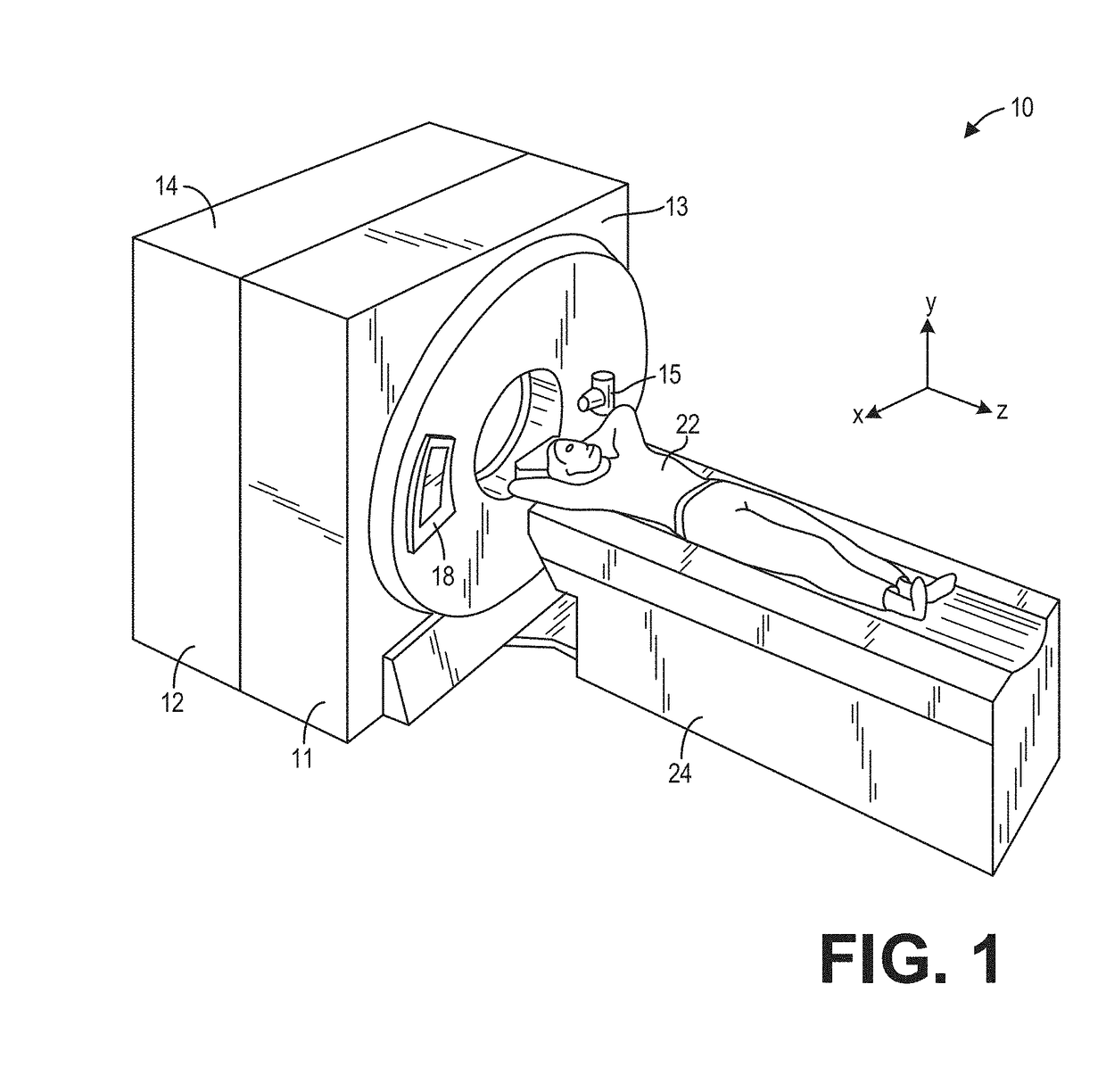Methods and systems for adaptive scatter estimation
a scatter estimation and adaptive technology, applied in the field of positron emission tomography, can solve problems such as misregistration or misalignment degrading image contrast, and affecting the accuracy of ct images and pet images
- Summary
- Abstract
- Description
- Claims
- Application Information
AI Technical Summary
Benefits of technology
Problems solved by technology
Method used
Image
Examples
Embodiment Construction
[0018]The following description relates to various embodiments of scatter correction for positron emission tomography (PET) imaging. In particular, systems and methods are provided for PET scatter tail fitting with adaptive iterative outlier removal. A multi-modality imaging system, such as the PET / CT system depicted in FIG. 1, may include an emission imaging system such as the PET imaging system depicted in FIG. 2. The image quality and quantitative accuracy of PET is impacted by a number of physical factors which must be accounted for during image reconstruction. One important factor is scatter correction, which is a vital component in the production of artifact-free, quantitative data. A method for scatter correction, such as the method depicted in FIG. 3, may comprise an iterative model-based scatter estimation. In such a method, given an emission sinogram and an attenuation-correction sinogram, emission images are reconstructed assuming initially that there are no scatters in t...
PUM
 Login to View More
Login to View More Abstract
Description
Claims
Application Information
 Login to View More
Login to View More - R&D
- Intellectual Property
- Life Sciences
- Materials
- Tech Scout
- Unparalleled Data Quality
- Higher Quality Content
- 60% Fewer Hallucinations
Browse by: Latest US Patents, China's latest patents, Technical Efficacy Thesaurus, Application Domain, Technology Topic, Popular Technical Reports.
© 2025 PatSnap. All rights reserved.Legal|Privacy policy|Modern Slavery Act Transparency Statement|Sitemap|About US| Contact US: help@patsnap.com



